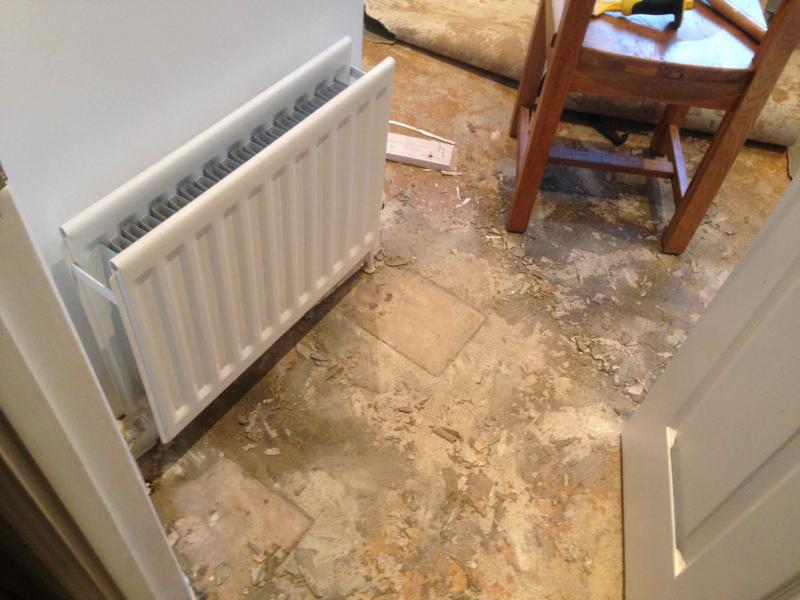Hi
Apologies for what i'm sure is a pretty obvious question:
I'm about to do my second ever tiling job - the kitchen of our new-ish build flat (built 2002).
On taking up the old vinyl tiles I found that the floor around the radiator pipes is plywood - level with the concrete. Each piece of wood is about 10cm x 25cm.
A picture of the floor is below...
The tiles are large format porcelain (1200x600mm) and, on the advice of BAL I'd bought Bal Stone & Tile PTB to use as adhesive.
I've had a number of conflicting bits of advice for how to handle the different surfaces:
1. BAL technical advice said I'd need an expansion joint and probably Ditra matting.
2. Topps Tiles said I wouldn't need any Ditra matting or expansion joint - that it was fine just to tile directly over the wood because I'm using a flexible adhesive.
3. Another tiling shop (from which I'm buying the tiles) said I wouldn't need Ditra mat but would need Bal Admix AD1 at a 1:3 ratio for the wooden section.
4. Schluter said I'd need Ditra matting through the whole kitchne.
Any advice? I'm planning to prime the floor after clearing the glue properly with SBR primer. The kitchen is approx 3m x 4m in size.
Really would appreciate your expert guidance!
Apologies for what i'm sure is a pretty obvious question:
I'm about to do my second ever tiling job - the kitchen of our new-ish build flat (built 2002).
On taking up the old vinyl tiles I found that the floor around the radiator pipes is plywood - level with the concrete. Each piece of wood is about 10cm x 25cm.
A picture of the floor is below...
The tiles are large format porcelain (1200x600mm) and, on the advice of BAL I'd bought Bal Stone & Tile PTB to use as adhesive.
I've had a number of conflicting bits of advice for how to handle the different surfaces:
1. BAL technical advice said I'd need an expansion joint and probably Ditra matting.
2. Topps Tiles said I wouldn't need any Ditra matting or expansion joint - that it was fine just to tile directly over the wood because I'm using a flexible adhesive.
3. Another tiling shop (from which I'm buying the tiles) said I wouldn't need Ditra mat but would need Bal Admix AD1 at a 1:3 ratio for the wooden section.
4. Schluter said I'd need Ditra matting through the whole kitchne.
Any advice? I'm planning to prime the floor after clearing the glue properly with SBR primer. The kitchen is approx 3m x 4m in size.
Really would appreciate your expert guidance!


